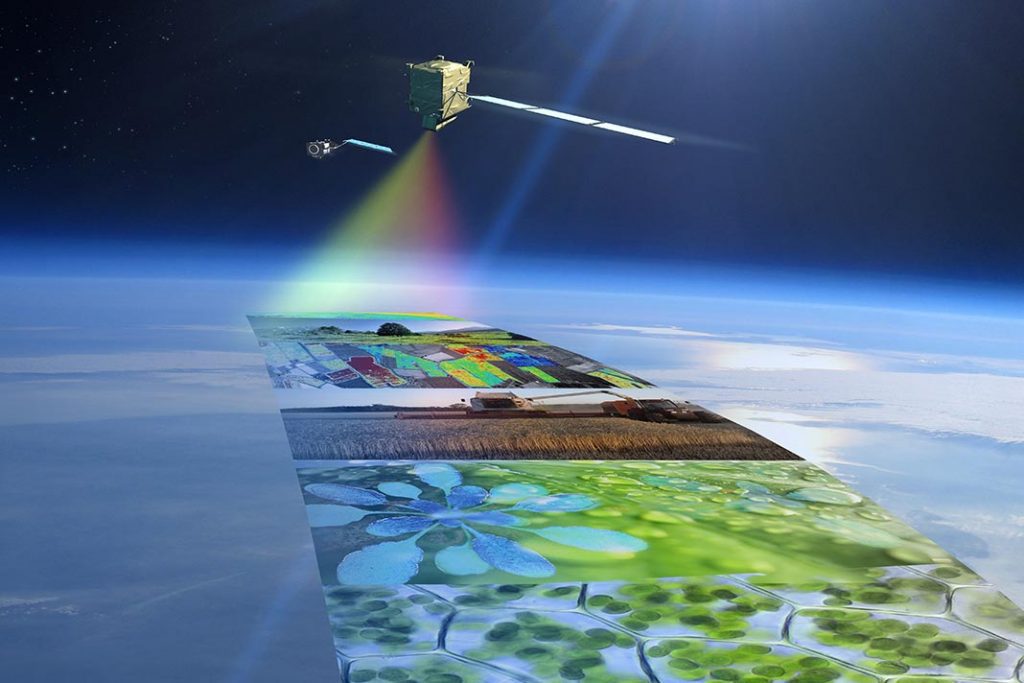What is Environmental Data Science?
Environmental Data Science is a relatively new and rapidly growing field that combines principles from environmental science, computer science, statistics, and data science to analyze and interpret environmental data. The field aims to understand and solve complex environmental problems using data-driven approaches. Environmental data scientists use advanced techniques to collect, process, analyze, and visualize large amounts of data related to the environment.
Types of Environmental Data
Climate data
Climate data is one of the most important types of environmental data and includes temperature, precipitation, humidity, wind speed, and other meteorological variables. Climate data is used to understand the long-term trends and patterns of climate change and its impact on the environment and human health.
Related article: Environmental Big Data for Climate Change: Benefits, Challenges, and Applications
Air quality data
Air quality data includes information on pollutants such as ozone, nitrogen dioxide, and particulate matter in the air. This data is used to monitor air quality and to develop policies and regulations to reduce air pollution and protect human health.
Biodiversity data
Biodiversity data includes information on the variety of living organisms in an ecosystem, from plants and animals to microorganisms. This data is used to monitor changes in biodiversity and to develop strategies for conservation and restoration.
Read more about how technology can help conserve biodiversity
Water resource data
Water resource data includes information on water quality, quantity, and availability. This data is used to monitor water resources and to develop policies and practices to manage and protect water resources for human use and the environment.
Applications of Environmental Data Science
Climate change modeling and prediction
Climate change modeling and prediction is one of the most important applications of environmental data science. Environmental data scientists use data and models to predict future climate patterns and to develop strategies for reducing greenhouse gas emissions and adapting to the impacts of climate change.
Natural resource management and conservation
Natural resource management and conservation is another important application of environmental data science. Environmental data scientists use data to manage and conserve natural resources such as forests, fisheries, and wildlife.
Related article: Harnessing Environmental Big Data for Effective Natural Resource Management
Pollution monitoring and control
Pollution monitoring and control is a critical application of environmental data science. Environmental data scientists use data to monitor pollution levels and to develop policies and technologies to reduce pollution and protect human health and the environment.
Disaster risk assessment and mitigation
Disaster risk assessment and mitigation is an important application of environmental data science. Environmental data scientists use data to assess the risk of natural disasters such as floods, earthquakes, and hurricanes, and to develop strategies for mitigating their impact.
Key Techniques and Methods in Environmental Data Science
Data preprocessing and cleaning
Data preprocessing and cleaning is a crucial step in environmental data science. Environmental data scientists use techniques to identify and correct errors, remove outliers, and fill in missing data before analyzing the data.
Statistical analysis and modeling
Statistical analysis and modeling is used to understand the relationships between variables in environmental data. Environmental data scientists use statistical techniques to analyze data and to develop models to predict future trends and patterns.
Machine learning and artificial intelligence
Machine learning and artificial intelligence are powerful tools in environmental data science. Environmental data scientists use these techniques to analyze large amounts of data and to develop predictive models for climate change, natural disasters, and other environmental phenomena.
Geospatial analysis and remote sensing
Geospatial analysis and remote sensing are used to analyze and visualize environmental data on a geographic scale. Environmental data scientists use these techniques to understand the relationships between environmental variables and to develop maps and other visualizations to communicate their findings.
Popular Tools and Technologies in Environmental Data Science
Programming languages
Programming languages such as Python, R, and MATLAB are commonly used in environmental data science. These languages provide powerful tools for data analysis and modeling, as well as for creating visualizations and interactive applications.
Data visualization tools
Data visualization tools such as Tableau, D3.js, and matplotlib are used to create interactive visualizations and maps of environmental data. These tools make it easy to explore and communicate complex data in a clear and engaging way.
Cloud computing platforms
Cloud computing platforms such as Amazon Web Services, Google Cloud Platform, and Microsoft Azure are increasingly used in environmental data science. These platforms provide powerful tools for data storage, processing, and analysis, as well as for collaboration and sharing of data and models.
Read about revolutionizing environmental analysis with cloud native solutions
Challenges and Opportunities in Environmental Data Science
Handling large volumes of data (big data)
Handling large volumes of data (big data) is one of the biggest challenges in environmental data science. Environmental data scientists need to develop new techniques for storing, processing, and analyzing massive amounts of data from a variety of sources. Cloud computing solutions can help
Ensuring data quality and accuracy
Ensuring data quality and accuracy is another challenge in environmental data science. Environmental data scientists need to develop rigorous standards for data collection, processing, and analysis to ensure that their results are reliable and accurate.
By following best practices in reproducible data science, researchers and data practitioners can ensure that their work is transparent, reliable, and easily understood by others. This fosters collaboration, encourages the sharing of knowledge, and ultimately leads to better decision-making based on data-driven insights. Best practices in reproducible data science include:
- Track how results are produced. Document every step of the analysis – including pre- and post-processing
- Avoid manual data processing. Avoid using Excel, and embrace tools like R and Python that encapsulate the analysis process in a tool form.
- Use a version control system. Your scripts, and if possible your data, should all be versioned. Tools like git can provide this framework.
- Connect results and interpretation. In reports, ensure that interpretations can be traced to results and analysis.
- Make code and results available. Providing the scripts and data in open repositories like GitHub can allow others to easily
Responsible Data Use
Responsible Data Use (including indigenous data sovereignty) is an important consideration in environmental data science. Environmental data scientists need to respect the privacy and rights of the communities and individuals whose data they use, and to work collaboratively with these communities to ensure that their data is used in a responsible and ethical way.
Beyond the standard “FAIR” use of data (Findable, Accessible, Interoperable, and Reusable), consider “CARE“:
- Collective Benefit: The data activities should provide benefits to the Indigenous Peoples, their communities, and nations.
- Authority to Control: Indigenous Peoples should have authority and control over their data, including the right to decide how it is collected, accessed, used, and stored.
- Responsibility: Those working with Indigenous data should have a responsibility to share the benefits, reduce harm, and ensure data accuracy, quality, and security.
- Ethics: Indigenous data practices should prioritize the well-being of the Indigenous Peoples, respect their rights, and adhere to ethical guidelines.
Conclusion
In conclusion, environmental data science is a rapidly growing and important field that combines principles from environmental science, computer science, statistics, and data science to analyze and interpret environmental data. The field has numerous applications in climate change modeling and prediction, natural resource management and conservation, pollution monitoring and control, and disaster risk assessment and mitigation. Environmental data scientists use a variety of techniques and methods, as well as popular tools and technologies, to analyze and visualize environmental data. However, there are also challenges and opportunities in the field, such as handling large volumes of data, ensuring data quality and accuracy, and using data in a responsible and ethical way.
Next Steps
Round Table Environmental Informatics (RTEI) is a consulting firm that helps our clients to leverage digital technologies for environmental analytics. We offer free consultations to discuss how we at RTEI can help you.


